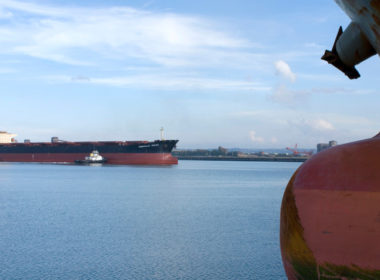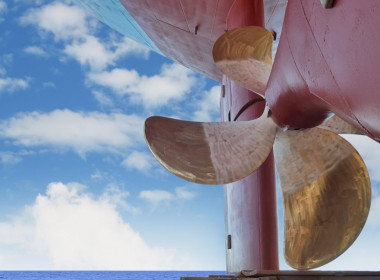OPINION | Why Australia should work with India on a maritime strategic fleet

In November, the Strategic Fleet Taskforce released a report that found that Australia needs a strategic fleet and maritime workforce, noting that only 15 vessels over 2,000 DWT are now Australian-flagged.
The taskforce, within the Department of Infrastructure, said that with so few vessels, “in a crisis, we would have great difficulty accessing and controlling the maritime assets that we might require.”
However, if the purpose of a strategic fleet is to provide maritime capacity in a crisis, Australia needs to think beyond whether a ship is Australian- or foreign-flagged. For instance, India’s vast and growing maritime capacity could provide Australia alternative shipping in a crisis, both as Australia’s fleet takes shape and, once it’s established, to complement the fleet.
The report states that the three “prime strategic purposes” of the proposed fleet include disruption event response, supporting sovereign manufacturing industries and supporting the Australian Defence Force (ADF). According to the taskforce, “without a sustainable pool of Australian-flagged vessels and crew, the ability for government to access a strategic fleet in times of need will be almost impossible.”
“The idea of the fleet relies on the Australian government’s ability to requisition strategic fleet vessels when needed—which it cannot currently do outside times of declared war.”
While the taskforce outlined a strategic fleet with 12 additional vessels as a priority, eventually it is envisaged as growing to between 30 and 50 privately-owned but Australian-flagged vessels. It proposes a range of financial incentives and subsidised training opportunities for Australian mariners to achieve this. The taskforce also said that a more conducive policy setting would revitalise Australia’s shipping industry in peacetime, which could then be requisitioned in times of crisis.
The idea of the fleet relies on the Australian government’s ability to requisition strategic fleet vessels when needed—which it cannot currently do outside times of declared war. Requisitioning arrangements would be achieved through contracts that specify shipping capacity at certain times and locations, as well as through legislation, with corresponding compensatory arrangements.
But the strategic fleet need not be entirely Australian-flagged. Indeed, the taskforce recommended (and the government agreed in principle) that partnership opportunities with other countries and foreign companies to secure additional capacity and supplement the strategic fleet be pursued. Australian policymakers should prioritise India as a partner.
Put simply, India’s maritime sector is booming. According to Invest India, as of 2023, 1,526 ships sail under India’s Tricolour and India is the world’s 16th largest maritime country. India’s Maritime India Vision 2030 strategy lays the framework for it to continue expanding its maritime sector.
In recent years, Australian and Indian strategic perspectives have largely converged. Reflecting this strategic alignment, the bilateral relationship was upgraded to a comprehensive strategic partnership in 2020, the 2+2 dialogue (Defence and Foreign Affairs) dialogue is now held at the ministerial level, a mutual logistics support agreement was inked in 2021, and regular defence exercises are convened. Australia-India cooperation should extend to supporting Australia’s strategic fleet.
“While Indian ships may not be legally requisitionable by the Australian government, healthy retainers and contract activation fees would guarantee vessel supply in all but the direst of global catastrophes.”
According to Australia’s 2023 defence strategic review, Australia is a significant Indian Ocean state and must continue expanding relations and practical cooperation with key powers, including India. Immense appetite exists at the political level for Australia and India to deepen defence and security cooperation, and the strategic fleet is a ripe opportunity.
To achieve this, Australia should contract Indian shipping operators to supplement the strategic fleet with Indian-flagged vessels. Contractual arrangements can be implemented requiring ships to be made available at specific locations and timeframes upon notification. The Indian government would need to support such agreements. A similar arrangement has contributed to NATO’s strategic sealift capabilities, which guarantees vessels upon demand. While Indian ships may not be legally requisitionable by the Australian government, healthy retainers and contract activation fees would guarantee vessel supply in all but the direst of global catastrophes.
Indian ships need not transit maritime choke points or contested waters to reach Australia. In a conflict involving China, the South China Sea would most probably be inaccessible. Further, as half the world’s container traffic transits the Indian Ocean, and approximately 40 per cent of the world’s offshore oil production is derived from this vast seascape, Indian vessels are uniquely placed to supply Australia in a crisis.
This capacity would be a cost-effective means of guaranteeing ship supply. While a retainer would be payable, activation fees would only be due in a true disaster when other commercial ships are not available. Such instances are rare.
Contracts with the Indian shipping industry would satisfy many of the requirements associated with a strategic fleet. While developing a sustainable and vibrant domestic Australian shipping industry is a sound strategy, the costs are considerable, and Australia’s international partners should not be overlooked. India’s sizeable and rapidly modernising shipping industry is a potential key partner, which could underpin the resilience of Australia’s shipping requirements in times of crisis.
This article was written as part of the Australia India Institute’s defence program undertaken with the support of the Australian Department of Defence. All views expressed in this article are those of the author only.








